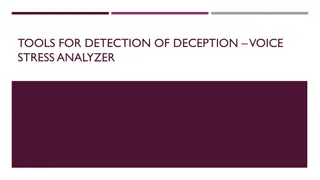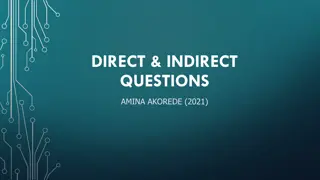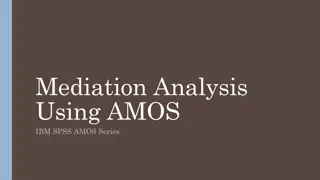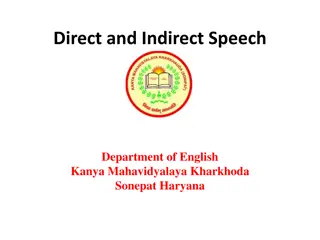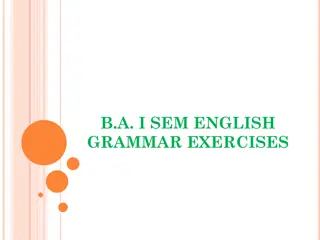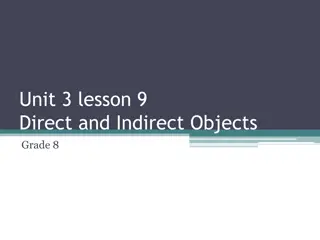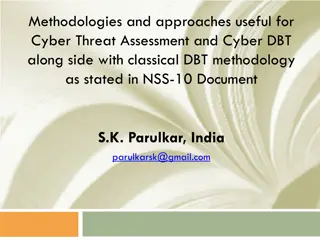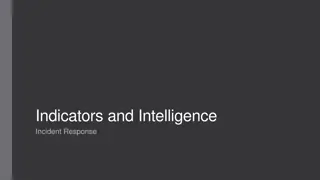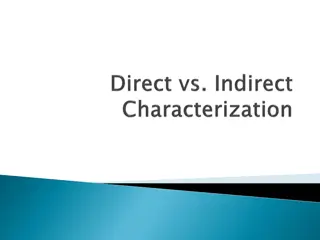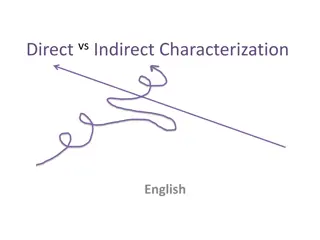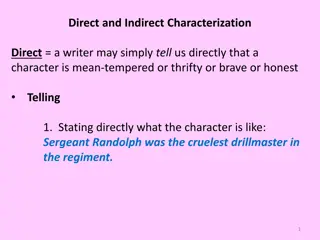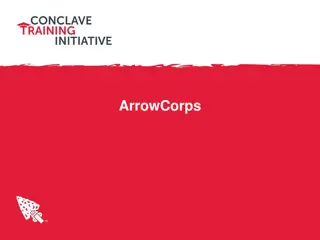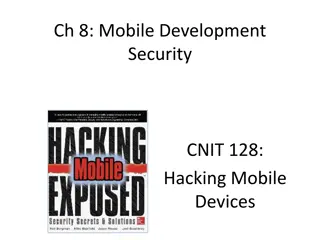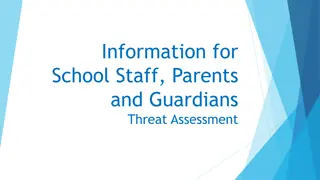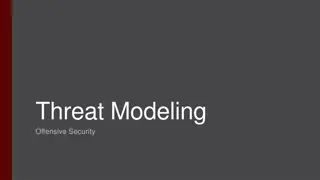Understanding Threat Assessment in Conservation: Direct, Stress, and Indirect Threats
Within threat assessment for conservation, different types of threats are identified and categorized, including direct threats which are human-induced actions directly affecting conservation targets, stressors which result from biophysical impacts of actions on targets, and indirect threats contributed by human activities. Examples and distinctions between these threat types are explained to enhance understanding of conservation efforts.
Download Presentation

Please find below an Image/Link to download the presentation.
The content on the website is provided AS IS for your information and personal use only. It may not be sold, licensed, or shared on other websites without obtaining consent from the author. Download presentation by click this link. If you encounter any issues during the download, it is possible that the publisher has removed the file from their server.
E N D
Presentation Transcript
Conservation Coaches Network New Coach Training Threat Assessment The Search for Critical Threats
Which Site is Better Conserved? Threat Assessment Site A Site B
Which Site is Better Conserved? Threat Assessment Site A Site B
What Is The Question? Threat Assessment Direct Threats: Human-induced actions or events that directly degrade one or more conservation targets Diver and anchor damage Legal but unsustainable fishing by local fishermen Direct threats are: usually human activities, but they can be natural phenomena altered by human activities or whose impact is increased by human activities (e.g., global warming; tsunami that threatens the last remaining population of an Asian rhino) Coral Reefs
Direct Threat vs. Stress? Threat Assessment Direct threat: Human-induced actions or events that directly degrade one or more conservation targets. A direct threat has at least one actor associated with it. Example: residential development Stress: biophysical impact of that action on the target a impaired aspect of a target. A single stress can be caused by multiple direct threats. Examples: habitat fragmentation, high mortality
Direct Threat vs. Stress Threat Assessment Direct Threat Example Stress(es) Example Target Affected Dams Altered stream flows Reduced reproductive success of fish Erosion (Rivers and streams) Sedimentation Habitat destruction Habitat fragmentation Rivers and streams Migratory fish Unsustainable Logging Rivers and streams Rivers and streams, Estuaries Forests Forests Monkeys, Rhinos Illegal Hunting Altered population structure Unsustainable Agriculture Sedimentation Habitat destruction Habitat fragmentation Rivers and streams, Estuaries Forests, Grasslands, Wetlands Forests, Grasslands, Wetlands Climate change Coral bleaching Rising sea levels Reduced rainfall Coral reefs Shoreline habitat Forests, Grasslands, Deserts
Direct Threat vs. Indirect Threat? Threat Assessment Direct threat: an action taken by a human that degrades a conservation or resource management target. A direct threat has at least one actor associated with it. Example: residential development Indirect threat/contributing factor/driver (short definition): an economic, cultural, societal, institutional factor that influences a direct threat Examples: need for income, lack of knowledge, poor capacity
Key Points to Introduce this Step Threat Assessment Indirect Threats Direct Threats Project Teams Biodiversity Targets Actions employ affect drive affect Oppor- tunities Cows? Cattle? Livestock? Grazing? Ranching?
Key Points to Introduce this Step Threat Assessment Available at www.conservationmeasures.org
Key Points to Introduce this Step Threat Assessment Most Common Threat Ratings: Stress-based threat rating: Rates the scope (or extent) and severity (magnitude) of stress to target and the contribution and irreversibility of each direct threat to stress Simple threat rating: Rates the scope (or extent), severity, irreversibility of direct threat only
Key Points to Introduce this Step Threat Assessment THREAT RATING SYSTEM CMP e-AM / TNC Rapid CAP THREAT RATING CRITERIA Scope Severity Irreversibility Scope (Spatial) TNC 5-S Severity Contribution Irreversibility BSP TRA Area Intensity Urgency Birdlife Scope Severity Timing WWF RAPPAM Extent Impact Permanence Probability Trend TNC s SE Division Extent % Targets Severity WWF Root Causes Scope Impact Permanence WCS Living Landscapes Proportion of Area Recovery Time Severity Probability Urgency
Key Points to Introduce this Step Miradi uses a Rule-Based system to combine scores Threat Assessment Scope + Severity = Threat Magnitude Scope Very High High Medium Low Very High Very High High Medium Low Severity High High High Medium Low Medium Medium Medium Medium Low Low Low Low Low Low Threat Magnitude + Irreversibility = Threat Rating Irreversibility Very High High Medium Low Very High Very High Very High Very High High Magnitude High Very High High High Medium Medium High Medium Medium Low Low Medium Low Low Low
Key Points to Introduce this Step Miradi summarizes across the three criteria Threat Assessment
Key Points to Introduce this Step Threat Assessment Miradi summarizes across all targets and threats 2 Prime Rule: Need at least 2 of a level 3-5-7 Rule: 3 Highs = 1 Very High 5 Mediums = 1 High 7 Lows = Medium
Critical Questions to Ask the Team Threat Assessment Have they considered all threats (or KEAs if using a stress-based rating)? Anything missing? Any surprises with the rating roll-up? Probe for ideas on why this might be the case Probe for over-rankings Look for double-counting of direct threats or stresses Probe for specificity of High-ranked direct threats sooner or later the devil will be in the details
Common Issues & Recommendations Threat Assessment Issue: How to deal with historic threats? Sins of the past = lower viability Sins of the future = threats
Common Issues & Recommendations Threat Assessment Issue: What about the 10 year guideline for ranking threats? Works for everything but some invasive species & long-term/persistent/insidious sources like climate change
Common Issues & Recommendations Threat Assessment Issue: When to lump vs. split threats? If in doubt, better to split initially Split if actors are different and will require different strategies (e.g., artisanal vs. industrial fishing) And then use IUCN common threat taxonomy to give the perspective that lumping can provide Also, see if splitting artificially dilutes threat ratings
Common Issues & Recommendations Threat Assessment Issue: Simple or Stress-based Threat Rating? Simple rating is faster. Use it if you feel confident that this will give a good approximation of the importance of different threats. Stress-based is more rigorous but more time- consuming. Use it when the source of the problem is not immediately clear
Common Issues & Recommendations Threat Assessment Issue: What about potential catastrophic threats of unknown likelihood and impact? User Override works here team s best guess
Common Issues & Recommendations Threat Assessment Issue: Are natural disturbances (e.g. hurricanes) stresses? No, unless they ve been exacerbated by a known source (e.g., excess CO2)
Common Issues & Recommendations Threat Assessment Issue: What about cumulative impacts? The Miradi scoring algorithm addresses a source that causes multiple stresses, but not multiple sources to multiple stresses that may have a cumulative impact
Threat Helpful Hints Assessment Use simple circles and percentages to illustrate the concepts of quantifying scope, severity, and irreversibility for the first few ratings. This can help get a team started. Encourage teams to refer to the definitions of Very High, High, Medium, and Low as often as possible to ensure as consistent a rating as possible. Teams often over-rank future threat by letting current ecological condition creep into their consciousness; this is already accounted for in a Poor or Fair Viability rank
Threat Helpful Hints Assessment As much as possible, explicitly describe climate change related threats in terms of how they might impact targets. Roll up threats by targets, not by sites, to get useful information for multi-area strategies Another test to consider for stress-based rankings... A Very High stress should reduce a key attribute to Poor A High stress should reduce a key attribute to Fair




